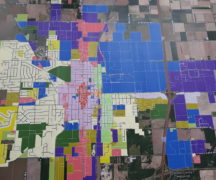When we learned that BG’s zoning code would be revised by professional urban planners well-versed in sustainable development, we assumed this process would be a win-win. After all, the existing code is cumbersome and in need of updating.
ZoneCo, based in Cincinnati, has worked with cities in 17 states. Their website asserts that they are a “national leader in crafting clear, consistent, user-friendly, equitable, and defensible zoning regulations that promote your community’s vision.” One might wonder what exactly needs to be “defensible” in a zoning code, but presumably the experts know best.
Has ZoneCo actually listened to the affected residents? Considering the significant community resistance to this proposal, a relevant question might also be “whose vision should prevail?”
Barely five years ago, residents contributed to a Community Action Plan for desired improvements to our town. Unfortunately, ZoneCo does not seem to have used this plan in their work. An impressive list of clients on their website offers no information on outcomes or local satisfaction. So whether or not the recommended changes will prove beneficial for Bowling Green looms large.
Homeowners are concerned that noise and litter from new businesses on residential blocks will harm property values; dividing historic homes into duplexes will lead to ill-kept rental properties. Others believe that fitting more apartments onto single lots will limit climate-change pollution by reducing the need for driving and curtailing urban sprawl.
ZoneCo touts the ideals of “New Urbanism,” which argue for dense inner-city housing to create walkability. But proximity to bars and restaurants is not enough to eliminate the need for car travel. Economic trends — love them or hate them — virtually mandate that most grocery purchases take place in big box stores on the edges of town. Without public transportation to take inner-city dwellers to supermarkets, or to bring people downtown from other neighborhoods, it’s hard to see how car usage can be reduced, regardless how densely we pack the near-downtown district.
When the zoning code proposes no green belt to contain development, sprawl is unlikely to slow.
The specific goals of ZoneCo’s plan remain unclear. Has enterprise been thwarted by current regulations against businesses on residential streets? Are entrepreneurs clamoring to open doors in those locations? Will renters get a better deal with older homes divided into apartments?
Hopefully, these questions will be clarified when city government hosts a public forum before approving new zoning codes for our city.
Marilyn Shrude
Bowling Green



